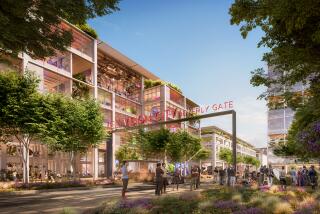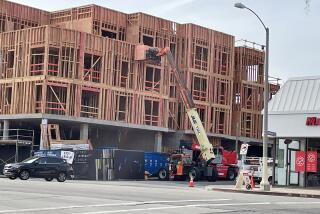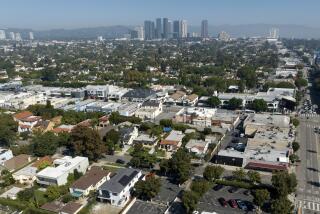Plan to Widen Busy Anaheim Intersections Angers Public
- Share via
The Anaheim City Council on Tuesday night faced an angry audience of about 60 people, who turned out to protest a controversial plan to widen the city’s most congested intersections.
“I own property that is going to be taken away,” Anaheim resident Julia Araiza told the council. “It is my land. It is being taken away.”
David Chavez, who said his bedroom would be seven feet away from a widened intersection under the plan, said he was worried about who would pay to move his house. “I’d like to have it in writing for a little peace of mind,” he said. “I have a nice front yard now.”
But Mayor Ben Bay told one critic of the plan that “the potential gridlock we are facing is reality.”
May Delay Decision
By late in the evening, more than 20 had spoken against the proposal. It was unclear what action the five-member City Council would take, but city officials earlier had indicated that the council members might seek to delay a decision on the controversial matter.
The proposal, a 20-year project that could carry a price tag of $87 million, is aimed at relieving logjams along the city’s major arterial streets. Anaheim would be the first city in Orange County to pursue such an ambitious solution to its rush-hour traffic snarl.
Under the widening plan, targeted intersections would have three traffic lanes, a separate right-turn lane and two left-turn lanes, as well as a 300-foot acceleration lane for cars making a right turn and merging into traffic, and a bus turnout.
The widened intersections would improve safety as well as speed up traffic flow 21% by the year 2000, according to the city’s engineering staff. Motorists would save money and time, and pollution would be reduced from vehicles now idling in stalled traffic, staff members said.
12-Foot Slice Needed
But some of the property owners whose land lies in the project’s path have protested the plans, which require a 12-foot slice of land on each side of the street to widen the targeted intersections.
Many owners of the 600 parcels needed to complete the project would lose parking lots, storefronts and, in some cases, residences. And about 350 people living in houses and apartments at many of the intersections would be forced to move, according to city estimates.
Under the proposal, some property owners would give up the land in return for city approval of zoning variances or any significant upgrades on the site. The city also could buy the land through negotiation, pay the costs of moving any affected structures or acquire the parcel through eminent domain and pay the assessed market value of the property.
The city may also make exceptions on a case-by-case basis, city spokesman D. Patrick Denny said.
The equity issue, whether the city can fairly require some property owners to donate land for the project, remains the most controversial aspect of the proposal and one that council members must tackle.
The city first held an informational meeting on the project last November. In the spring, the Planning Commission voted by a narrow margin to approve the project provided that all land required by the plan be paid for.
City staff has estimated that it would cost $56 million to pay for all the needed right-of-way. Actual construction costs are estimated at $31 million.
Money for the project depends, in large part, on the success of a $30-million bond measure on the Nov. 8 ballot. The measure requires approval by two-thirds of the city’s voters.
Another $10 million could come from developer fees with an additional $5 million raised from other government sources, according to city estimates.
Samuel Magid, owner of a shopping center at Ball Road and Euclid Avenue, which would be affected under the widening plan, pleaded with the council to postpone action.
“Why not wait until you know (the results) of the bond issue?” Magid asked.
More to Read
Sign up for Essential California
The most important California stories and recommendations in your inbox every morning.
You may occasionally receive promotional content from the Los Angeles Times.










